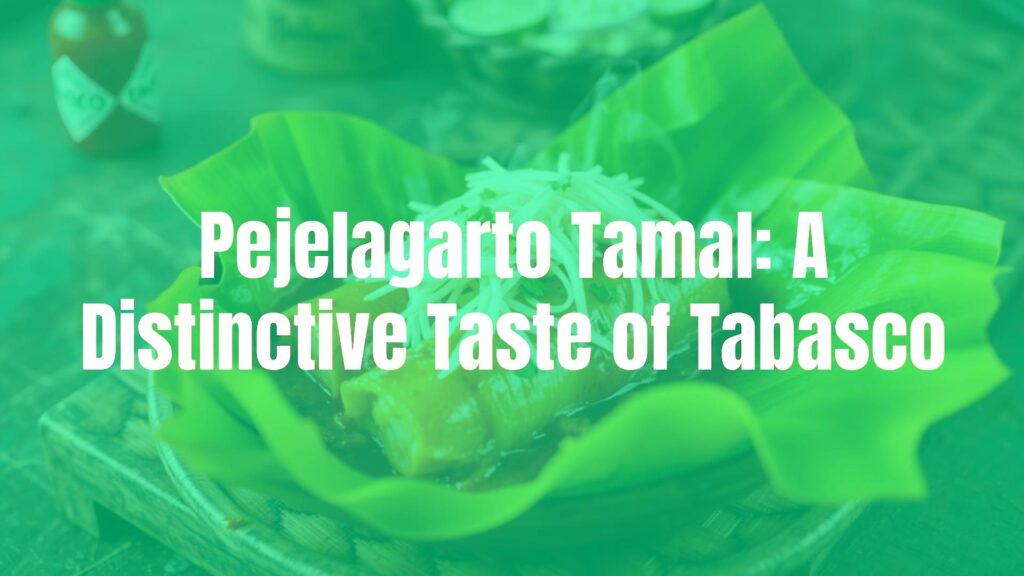Pejelagarto Tamal: Unveiling a Tabascan Culinary Tradition
Introduction to Pejelagarto Tamal
Among the regional delicacies of southeastern Mexico, the pejelagarto tamal stands out as a unique and deeply rooted culinary creation. Originating in the state of Tabasco, this tamal highlights the region’s prized freshwater fish, pejelagarto, which imparts an unmistakable flavor profile unlike any other tamal in Mexico.
Defining Characteristics
What sets the pejelagarto tamal apart is its signature use of the long-snouted fish known locally as pejelagarto (gar fish). The fish’s firm texture and mildly smoky, earthy flavor permeate the tamal’s masa, offering a remarkable contrast to the more common chicken or pork fillings found elsewhere. The masa is often seasoned with local spices and herbs, creating a savory, aromatic base that complements the fish.
Traditionally, the tamal is wrapped in banana leaves, contributing a subtle herbal undertone and keeping the finished product moist during steaming. The result is a tender, flavorful tamal with a distinctive aroma and appearance, marked by the iconic dark green of the banana leaf wrapper.
Origin and Cultural Significance
Pejelagarto has long been a dietary staple among the indigenous peoples of Tabasco due to its abundance in local rivers and wetlands. The practice of incorporating this fish into tamales likely arose from a fusion of pre-Hispanic preservation methods and later influences following the Spanish conquest. Today, pejelagarto tamales are prepared for special occasions, festivals, and family gatherings throughout the region, symbolizing both resourcefulness and regional pride.
Key Ingredients and Preparation
At its core, a pejelagarto tamal features three principal components:
- Pejelagarto fish: Grilled or smoked before being incorporated, lending a distinctive taste and aroma.
- Masa (corn dough): Seasoned with lard or vegetable shortening, local herbs, and sometimes achiote for a subtle color and flavor boost.
- Banana leaves: Used as wrappers to infuse subtle flavor and retain moisture during steaming.
The fish is typically shredded and mixed with masa, sometimes enriched with a sauce or additional seasonings like epazote, oregano, or green chili, reflecting family preferences or local traditions.
Regional Variations and Substitutions
While Tabasco’s humid climate and rich waterways make pejelagarto readily available, cooks outside the region occasionally use substitutes such as catfish or tilapia, though purists maintain that only pejelagarto carries the authentically smoky, earthy flavor. Some recipes introduce a spicier kick with chipotle or jalapeño chilies, while others add roasted tomatoes or sweet peppers for a softer profile. Vegetarian adaptations are rare, given the dish’s focus on fish, but can be made by using smoked vegetables and maintaining the traditional masa and banana leaf wrap.
Serving Suggestions and Pairings
Pejelagarto tamales are best enjoyed freshly steamed, still wrapped in their banana leaves. They are commonly served alongside atole (a warm, corn-based beverage), fresh tabasqueño cheeses, and pickled jalapeños. For a heartier meal, they can be paired with simple white rice and a vibrant green salad. Crisp local beers or tart aguas frescas, such as tamarind or lime, are also favored accompaniments that balance the tamal’s rich, smoky undertones.
Conclusion
More than just a regional oddity, the pejelagarto tamal encapsulates the rich environmental and cultural landscape of Tabasco. For food enthusiasts seeking to experience a genuinely distinctive Mexican recipe, this tamal offers a window into both pre-Hispanic traditions and contemporary celebrations of local bounty.

